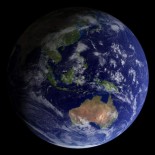Former Dep. Mayor of Jerusalem tells it like it is
By Meron Benvenisti | Ha’aretz | 20 October 2006
Approval of Moshe Safdie’s plan for expanding Jerusalem westward has been deferred once more, making it the latest – but not the last – postponement of various unimplemented expansion plans during the course of more than 15 years.
From the beginning, this unnecessary plan, drawn up according to conditions and conceptions that prevailed nearly 20 years ago, was based on a statistical fiction wrapped in counterfeit patriotism. It is nothing more than a cynical attempt to exploit the lofty name of the holy city to create construction lots for the nonexistent housing needs of imaginary Jews, to “balance” the “demographic threat” of the Arabs, on paper at least.
In the 1970s someone came up with a “desirable” demographic ratio between Jews and Arabs in Jerusalem, and since then the natural growth of the Arab population has been the dominant factor in city planning. All other considerations are dwarfed by the danger that the Arabs will win in the war of wombs. Everyone, whether “green” environmentalists or “orange” right-wingers, bows to this racist scarecrow and argues only about whether the so-called solution should be to destroy the existing urban fabric or to ruin the open areas to the west of the city.
No one mentions the fact that the “demographic balance” is fundamentally fictitious. It was created through a manipulation of Jerusalem’s borders in 1967, based on the principle of preserving a minimum of Arabs and a maximum of land for Jews. In the name of this principle, more and more exposed or dispensable hilltops have been annexed to the city since 1967 and anointed with the holy oil of the Eternal City.
There is nothing new in the Safdie plan. On the contrary, it is boring in its banality. This is exactly how Jerusalem has been planned since 1948: The core of the city is neglected, a hilltop is captured and built up, but the infrastructure and the linkage to the heart of the city is never completed. And after most of the apartments have been constructed, it is time to move on to the next hilltop. That’s what happened with Kiryat Hayovel, Givat Masua, French Hill, Gilo, Ramot, Pisgat Ze’ev and – saving the not-best for last – Har Homa.Only an agreed-upon lie, supported by a bureaucratic definition, could allow for such an agglomeration of bedroom communities, ultra-Orthodox ghettos and neglected Arab neighborhoods to be considered a functioning capital city, an urban fabric that the Safdie plan is threatening to destroy.
When it finally became clear, at the beginning of the millennium, that the need to have two Jews for every additional Arab will never be fulfilled, even fanatic nationalists began publicly discussing the removal of Arab neighborhoods from the municipal boundaries so as to reduce the number of these residents and “to improve the demographic balance.”
But the removal of such “peripheral neighborhoods” does not interest the supporters of the Safdie plan. Such an option would take away their patriotic justification, the last refuge of a contractor. Even the reality created by the construction of the separation fence does not interest those aspiring to expand westward. They are interested in annexing 24,000 dunams (6,000 acres) of forested areas and nature reserves, contending that it is impossible to annex areas in the eastern part of the city “due to geopolitical considerations.” However, there is no greater deception than this.
The separation fence annexes more land to the city’s area (the bureaucratic-municipal definition is meaningless here) than the land that constitutes the municipal territory of Jerusalem today. There is room for more than an additional quarter of a million people in the territory within the area of the separation fence. The potential for populating the area is based on Jerusalemites who have moved and will move to “settlement blocs” in the east thanks to the generous grants supplied by the government, which make life in Jerusalem relatively expensive.
Thus does the Israeli government encourage migration from Jerusalem with the aim of taking over West Bank land, then using this negative migration (“which worsens the demographic balance”) to justify the annexation of territory in the west, to attract Jewish migration. But heaven forfend that the issue of “the settlements” be mixed with the issue of preserving nature in “sovereign Israel.”
Even the environmentalists hold their peace when it comes to the massive destruction that has already been caused to the desert landscape and biblical scenery in the territory beyond the Green Line. Why destroy the Coalition for the Preservation of the Jerusalem Hills by raising issues that are considered to be political? In this way, the dispute over two hilltops in western Jerusalem, which is important in its own right, overshadows the need to save what remains of the urban fabric of the capital, which has already mostly dissolved.
Soon the debate over the Safdie plan will cease being relevant; there will simply be nothing left to save.
The author was deputy mayor of Jerusalem from 1971-78.

Recent Comments